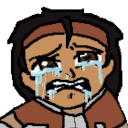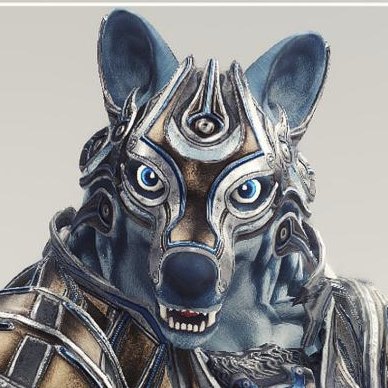On my last session of d&d combat took too long and I had to apologize for it to my players. One player, who is a Pathfinder 2e player, said it’s nothing compared to long fights he had in that system, where between party of high level casters, boss, minions and enemy spellcasters, he would be waiting a whole hour for his next turn. I certainly want to at least have one Pathfinder 2e campaign among options to present to this group after we finish current one, so how much is this a general problem and not his group’s problem and are there some ways to avoid this long combat?
It can entirely depend on who’s at the table and what you’re fighting. If you’re prepared, and things have played out as you’ve expected, your turn can last as little as 5 seconds, and if everyone else is equally prepared, you could be looking at 2 - 3 minutes per round. But if things get messy, if there are a lot of mobs on the table, if people haven’t thought about their next course of action, etc., it can bog down.
My table usually takes around 30-45 minutes per combat, but most of that is me as the GM fumbling the transition between different NPCs.
An hour between turns sounds like there’s just something totally broken at that table, though.
Combat always takes a long time especially at high levels. Pathfinder 2e and DnD 5e are both on the long side but not as long as PF1e and DnD 3.5e. Both have an increase in combat duration at higher levels. There’s just not options and more complex monsters.
If you want to make combat to go faster there’s a few different ways to do so. I recommend doing morale rolls for enemies to cause them to flee if they fail. Also better player management about whose turn is up and what they want to do. (A short recap about whose next can help if you don’t have a visible turn order). Talk with you players about what kind of combat and what they enjoy will help.
The worst system I’ve ever played was dnd 4e. It was the first one I played so I thought it was great at the time but fuck, it was only built for combat and it sucked at combat. You would take forever doing pointless attacks for the other minor bonuses they would give. 0/10 would never play again
I’ve been trying it out because I kind of skipped that edition, and tbh combat has been pretty amazing. Every battle is fun and tactically interesting. It’s really been scratching that itch I had for dynamic, teamwork set piece combat that I was afraid I was going to lose when some people wanted to play “DnD” and I really didn’t want to play 5e lol. It can take awhile because health is too big but once we instituted a common house rule and reduced enemy HP by 25-30%, it’s been perfect. We’ve just been doing a one-shots and tiny modules while the players humor me trying out this edition, though, so no idea how it will scale.
But now I do wish I had given it more of a chance before. Admittedly, now we have the benefit of hindsight, and some 10 years of common house rules recommended by the internet that didn’t exist when it first came out. I might even switch between it and PF2E from now on depending on how much I miss the cool critical rules and 3 action economy of PF2E vs dynamic forced movement rules and simple but abstract AEDU actions of D&D 4e. Although we’ll see if the sheen of newness fades at some point.
I’ve never played 4e, but this is a wholly new take from what I’ve heard.
There’s only 4 classes, reskinned as a lot more. The power system means there’s very little you can do magic wise out of combat, and with how the powers were daily/encounter/at will, if you didn’t resolve combat by dumping your big powers you were in for a slog of “I use this at will attack again”, every round, at every level. All the powers gave a ton of tiny random bonuses that were such a pain to keep track of it led to the creation of advantage and disadvantage. All the at will powers are “I attack and another small bonus thing happens”, so if you want the bonus thing but no enemies are in range, guess what, you’re attacking the wall/the ground/whatever. Honestly just a miserable time for the most part. What it had going for it was that it was incredibly simple to pick up, because all the classes worked exactly the same. It also simplified 3.5e’s cool but overly complicated skills
I’ve heard very little good things about it. It did give us short rests in 5e which I love.
Advantage and disadvantage also came out of it! As a way to simplify buffs and nerfs, because 4e had way too much small stuff to keep track of.
I’ve DMd for both and I can’t say I’ve noticed a big difference in terms of the amount of time combat takes. It sounds like your player was speaking more to the way combat duration scales up with high level play, not the average experience of playing at normal levels. FWIW, 5e famously turns into a slog at high levels too, so I don’t think it’s a PF2e thing specifically.
My last big boss fight in PF2 lasted about 3 hours and there were 10 rounds in that time - so about 1 round every 18 minutes. The party consisted of six level 12 characters - counting the GM, that means the average turn was about 2.5 minutes long.
(That includes some RP as well, villainous monologues, rescuing the hostage, etc)
Granted, I use the Foundry VTT, which speeds things up quite a bit. (And is also how I was able to review this data). And most of us are experienced with the PF2 system at lower levels and had jumped up to level 12 for a oneshot.
I’m only talking from watching PF2e actual plays and playing a lot of 5e but I’d say PF2e combats would run 1.2x longer under the same conditions as a 5e game.
I’d say DM style is easily the biggest influence, I’ve played in games where a one hour combat is the significant boss battle of a campaign, but rules for 6 rounds, and I’ve played in games where a 6 hour battle may be normal, potentially with as few as 4 rounds passing (the latter one absolutely does kill me though, I think my character in that game has actually developed to avoid a fight because I dont want the faff). I’d say DM style can influence a combat length by 3x or more.
Similarly an understanding of general efficiency in combat from the players too can half a combat length pretty easily.
I wouldn’t worry about it extending the game length, any extra time is pretty negligible compared to steps you can take to stop the time of combat unraveling.
PF2E has a lot of crunch, so combat slows down dramatically as character level increases.



